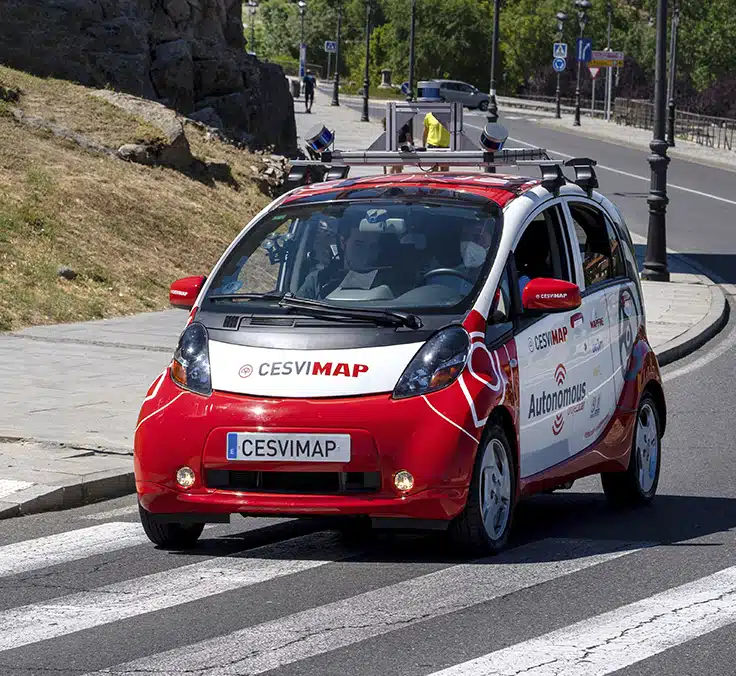SUSTAINABILITY| 12.15.2023
How to save fuel and protect the environment
Optimizing how you drive doesn’t just help the environment – it also helps you save on fuel.
According to Germany’s Federal Environment Ministry, changing our driving habits could help save approximately 5 million tons of CO2 per year.
Preparations before setting out
There are small changes you can make to prepare your vehicle before driving. Remember to perform the maintenance recommended by the manufacturer. Before a big trip, make extra checks to ensure a safer trip.
Check tire pressure
Regularly checking tire pressure not only helps save fuel, but it also extends the useful life of your tires. Maintaining the right pressure can result in savings of up to 84 euros per year and a reduction of 140 kilograms of CO2 emissions.
What tires to choose?
Choosing the right tires means safer driving, and can also make a difference in terms of fuel efficiency and sustainability. We recommend choosing tires with low rolling resistance. Tires with low rolling resistance require less energy to move forward, which translates into lower fuel consumption. These tires are designed with special compounds that minimize friction and enable the vehicle to move more efficiently. This can save up to 0.5 liters of fuel for every 100 kilometers.
Minimizing unnecessary loads
Reducing unnecessary weight on your vehicle not only lightens the load on your tires, but also positively impacts fuel efficiency and overall wear and tear on the car.
Roof bars, roof boxes and bike racks are useful when you need them, but when not in use, they represent a significant additional load. Even an empty roof rack can increase fuel consumption by 10% at a speed of 100 km/h. Removing these accessories when not in use prevents additional wind resistance and optimizes the vehicle’s aerodynamic efficiency.
The principle is simple: the more weight your vehicle carries, the more fuel it consumes. Before setting off on your trip, empty your trunk and remove any non-essential items. Whether there are unnecessary tools or an accumulation of personal items, every superfluous kilo can affect fuel efficiency. This not only improves efficiency, but also contributes to a more agile and comfortable ride.
It’s estimated that for every 45 kilograms of additional weight in a vehicle, fuel consumption increases by around 1%.
Choose the best route for your trip
Most current navigation systems enable you to set up routes to suit your preferences: whether you want the shortest route (minimum possible kilometers) or the fastest route (shortest possible travel time). GPS also helps you avoid traffic jams, which is another way to optimize fuel consumption.
Engine maintenance
Regular checks of components such as the air filter and changing the oil are not only vital to the safety of your vehicle. They can also significantly improve fuel efficiency.
While driving
Now your car is ready to hit the road. Here’s how you can drive more efficiently. These small changes in your routine will add up to big achievements in the short and long term.
Drive at low speeds
Shifting up early and shifting down late can reduce fuel consumption. Optimum engine efficiency is between 1,500 and 2,500 revolutions per minute.
Drive with foresight
Avoiding hard starts and accelerations can lead to considerable fuel savings. Keeping up with traffic, anticipating braking and using cruise control are effective strategies.
Avoid maximum speed
The higher the speed, the higher the fuel consumption. Maintaining a constant speed of 100 to 120 km/h on the highway is not only more economical and safer, but also more environmentally friendly.
Switching off the engine during prolonged stops
In accordance with regulations and for environmental reasons, turning off the engine in prolonged stops, such as in traffic jams or at lights, can be beneficial. Some vehicles are already equipped with start-stop technology that does this automatically.
In addition to the economic and environmental benefits, adopting efficient driving practices also improves road safety. Keeping your distance from other vehicles, regularly inspecting tires and brakes, and opting for efficient tires all contribute to a safer and more sustainable trip.
RELATED ARTICLES:




